The National Center for Earth and Space Science Education (NCESSE) is proud to introduce the SSEP National Step 2 Review Board for SSEP Mission 2 to the International Space Station (ISS). On May 22-24, 2012, the Board met at the Smithsonian’s National Air and Space Museum, in Washington, DC, to review 33 finalist proposals for student flight experiments submitted from across the network of 11 communities participating in SSEP Mission 2 to ISS. Listed below are the 10 Board Members—scientists, engineers, and science educators from academia, federal agencies, commercial entities, and national science education non-profits.
For Mission 2 to ISS, a total of 15,120 students in the 11 participating communities were given the opportunity to design real experiments to fly aboard the ISS. There were a total of 1,125 proposals submitted by student teams, with 449 forwarded for review by SSEP Step 1 Review Boards in the communities. Each of these local Boards selected up to 3 finalist proposals for submission to the SSEP National Step 2 Review Board.
For Step 2 review, the Board Members were divided into three teams, each comprised of both researchers and science educators, and each team responsible for review of proposals from 4 SSEP communities. Board Members selected 11 flight experiments. The Board Members spent a great deal of time providing thoughtful comments for all 33 proposals, which were forwarded to the proposing student teams by NCESSE. The review went well beyond what is typical of reviews for professional research proposals given there was a deep recognition that the process, and the comments back, were vitally important teachable moments for the student researchers that worked so hard on their proposals. Through SSEP, we want to immerse students in real science. The review process is very much a part of real science, and that process therefore needs to be transparent, and a learning experience.
NCESSE reviewed all comments from the Step 2 Review Board to assess if there were any outstanding questions that needed to be addressed by the selected student flight teams, and on June 5, 2012, NCESSE formally announced the selected flight experiments.
To the thousands of students that participated in SSEP Mission 2 to ISS, regardless of whether your proposal was selected for flight, and regardless of whether it even went before the Review Boards, you need to know that you were given the opportunity to be real scientists and you answered the call. We hope this experience has gotten you excited about science, technology, engineering, and mathematics fields, has given you insight into real research, and propels you to seek out new opportunities where you can be curious and take ownership … in journey.
So recognize that YOUR COMMUNITY now has an experiment destined for the International Space Station, that you are part of this historic adventure, and now you and your community can rally around your flight experiment and root for its success. Go team!
The SSEP National Step 2 Review Board for Mission 2 to ISS—
 1. Dr. Morgan L. Cable
1. Dr. Morgan L. Cable
California Institute of Technology/NASA Jet Propulsion Laboratory
Morgan Cable is a Postdoctoral Fellow at the NASA Jet Propulsion Laboratory in Pasadena, California. She earned her Ph.D. in Chemistry from the California Institute of Technology in 2010, where she investigated various lanthanide-based receptor sites for the detection of bacterial spores in extreme environments. Her current work as a NASA Postdoctoral Program (NPP) Fellow involves the development of ultrasensitive micro-total analysis systems for the detection of organics on Mars and Titan, one of the moons of Saturn. Morgan hails from Cape Canaveral, Florida, where she gained an early love of planetary science watching rockets launch into orbit. She enjoys surfing, soccer, flying Cessna 172s, mountain unicycling and teaching at a space camp in Seoul, Korea. She aspires to continue working through NASA to discover more about the universe and our place in it, and to pursue her dream of becoming a NASA Mission Specialist.
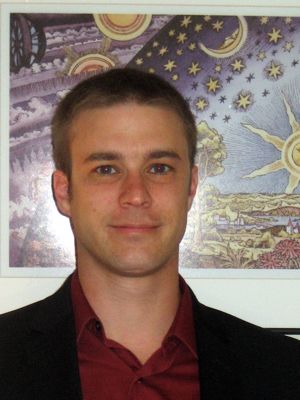 2. Dr. Dan Crooks
2. Dr. Dan Crooks
National Institutes of Health / National Institute of Child Health & Human Development
Dan Crooks is a post-doctoral fellow at the National Institute of Child Health and Human Development. He completed a B.A. in Molecular Biology, and an M.S. in Environmental Toxicology at the University of California at Santa Cruz, where he developed an interest in the roles of metals in cellular processes and in human diseases, and received his Ph.D. in Biochemistry from Georgetown University while working as a pre-doctoral Fellow at the National Institutes of Health (NIH). Dan is currently performing laboratory research at the NIH on the molecular mechanisms of cellular iron homeostasis using mammalian red blood cell development and a hereditary human muscle disease as model systems. In the future, he plans to pursue questions on the tissue specificity of human diseases as an independent scientific investigator.
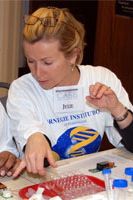 3. Dr. Julie Edmonds
3. Dr. Julie Edmonds
Carnegie Institution of Washington
Dr. Julie Edmonds is the Co-Director of the Carnegie Academy for Science Education at the Carnegie Institution of Washington. Her Ph.D. is in molecular marine biology, and after spending five years as a researcher in the biotechnology industry, she has concentrated on science education. She leads several education programs at the Academy, and is the education and public outreach lead for two NASA grants to Carnegie’s research laboratories: the MESSENGER mission to the planet Mercury and Carnegie’s NASA Astrobiology Institute team.
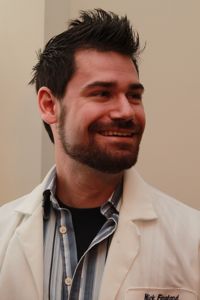 4. Dr. Nicholas Fingland
4. Dr. Nicholas Fingland
California Institute of Technology/NASA Jet Propulsion Laboratory
Nicholas Fingland is a Postdoctoral Scholar in Chemistry at the California Institute of Technology and NASA Jet Propulsion Laboratory. His work focuses on the design of instruments for detecting extremophile bacteria. Extremophile bacteria, with their abilities to withstand harsh environmental conditions (e.g., extreme cold, heat, pressure, UV exposure) are ideal candidates to develop instruments for the search of life within our solar system. Nicholas received his Ph.D. degree in biochemistry from the Georgetown University Medical Center in 2012. His Ph.D. work focused on the effect of acidic phospholipids present in the E. coli membrane on DNA replication. Dr. Fingland has significant experience designing and implementing microgravity experiments: prior to his arrival at Georgetown, he worked at NASA Ames Research Center investigating the effects of microgravity on integrin signaling in mammalian cells. While finishing his Ph.D. dissertation, Nicholas also continued his research in space biology by collaborating with researchers at the NASA Jet Propulsion Laboratory to conduct research on bacterial endospores, which will form the basis of his postdoctoral research.
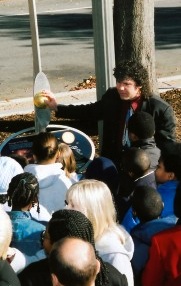 5. Dr. Jeff Goldstein
5. Dr. Jeff Goldstein
National Center for Earth and Space Science Education
Dr. Jeff Goldstein is the creator of SSEP, and its Program Director. He is also the Center Director for the National Center for Earth and Space Science Education (NCESSE). Jeff is a nationally recognized science educator, and planetary scientist, who has dedicated his career to the public understanding of science and the joys of learning. He oversaw the creation of the Center’s national science education initiatives, including the Voyage National Program. He led the inter-organizational team that permanently installed the Voyage model Solar System on the National Mall in Washington, DC. He is a blogger at the Huffington Post, and writes Blog on the Universe. His planetary science research includes the development of techniques for measuring global winds on other planets using large telescopes on Earth. His research has produced the first direct measurement of the global winds above the clouds on Venus, and the first measurement of the global winds on Mars.
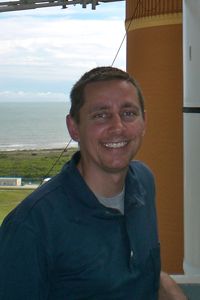 6. Michael Hulslander
6. Michael Hulslander
Smithsonian National Air and Space Museum
Michael is responsible for science education at the Smithsonian’s National Air and Space Museum. He also manages the How Things Fly gallery, Moving Beyond Earth gallery, the Public Observatory Project and the Explainers Program. How Things Fly teaches visitors about the science of flight. Moving Beyond Earth is an immersive exhibition placing visitors “in orbit” during the shuttle and space-station era. At the Public Observatory visitors explore craters on the Moon, spots on the Sun, the phases of Venus, and other wonders of the universe using a 16-inch telescope. The Explainers Program gives high school and college students the chance to work at the National Air and Space Museum. Michael has worked in museums and zoos for more than 25 years, researching, writing, presenting and evaluating science programs for school groups, families and the general public.
 7. Dr. Christine M. Lee
7. Dr. Christine M. Lee
NASA Jet Propulsion Laboratory
Christine Lee is a Postdoctoral Scholar at NASA Jet Propulsion Laboratory. Christine received her Ph.D. in Environmental Engineering from the University of California in Los Angeles. Her thesis research involved developing rapid methods for enumerating pathogen indicator bacteria in urban-impacted watersheds. Her graduate work has also allowed her to conduct field work internationally, including Bangladesh, Tanzania, and Mexico. Her research interests include applied environmental molecular/microbiology, astrobiology, and environmental engineering.
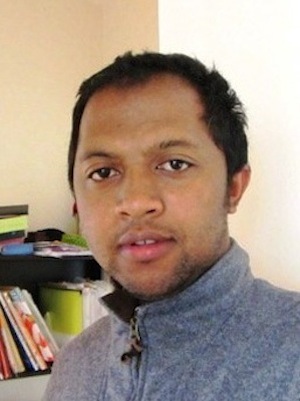 8. Dr. Sanda F. Rajaonson
8. Dr. Sanda F. Rajaonson
Université Libre de Bruxelles, Belgium and University of Antananarivo, Madagascar
Dr. Sanda Rajaonson received his PhD in Biological Sciences from the Université Libre de Bruxelles, Belgium and the University of Antananarivo, Madagascar through a joint program between the two institutions. His doctoral thesis focused on the inhibition of virulence gene expression in Rhodococcus fascians and Pseudomonas aeruginosa, as a culmination of years of research on the virulence of pathogenic bacteria. During his career, he has developed his interest in finding alternatives to battle the problem of multi-drug resistance in pathogenic bacteria. His next step is to continue his research in the areas of microbial genetics, host-microbe interaction and cell-to-cell communication in bacteria in order to improve his understanding of the molecular mechanisms of bacterial pathogenesis.
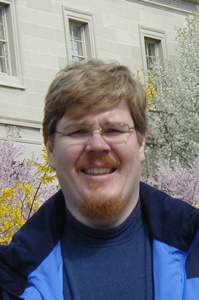 9. Dr. Harri Vanhala
9. Dr. Harri Vanhala
National Center for Earth and Space Science Education
Dr. Harri Vanhala is the Program Manager for SSEP, and a science researcher at the National Center for Earth and Space Science Education. His research focuses on the use of computer simulations to investigate the origin of the Solar System, and development of computer models to investigate the properties of present-day planets. His science education activities include leading multiple Journey through the Universe National Teams to under-served communities across the U.S., and managing the MESSENGER Educator Fellowship Program, a nationwide professional development initiative for educators in support of NASA’s MESSENGER mission to Mercury, and Family Science Night at the Smithsonian National Air and Space Museum.
The SSEP on-orbit research opportunity is enabled through NanoRacks LLC, which is working in partnership with NASA under a Space Act Agreement as part of the utilization of the International Space Station as a National Laboratory.
